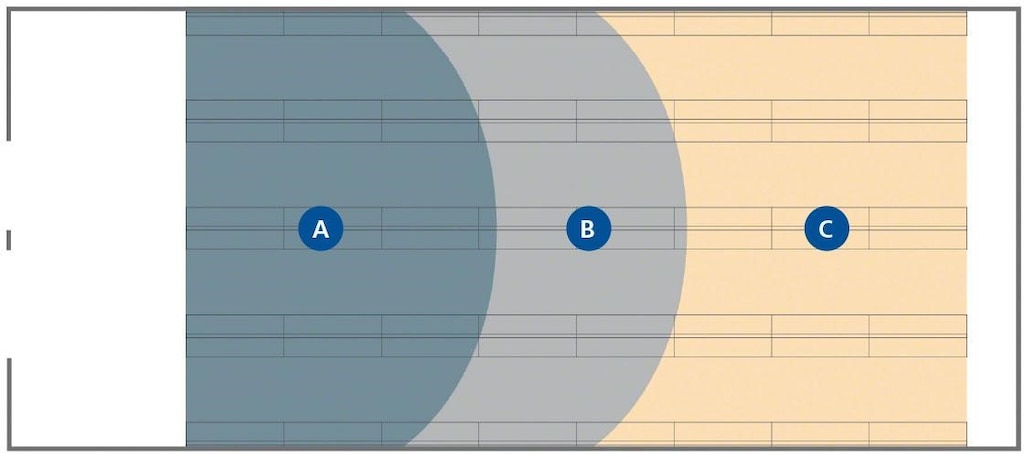
Stock turnover: what is it and how does it affect your warehouse?
Stock turnover refers to the number of times a warehouse’s inventory needs to be replenished in a period of time, usually one year. Knowing this index in your company is of vital importance, as it helps to control the risks associated with poor stock management. How is stock turnover calculated? What does it mean to have a high or low stock turnover?
Definition of stock rotation applied to a warehouse
Stock turnover can also be understood as the number of times an item goes through the entire process: it is sold, leaves the warehouse, and is paid out after a certain amount of time. Thus, the company recovers the initial investment it has made when acquiring the stock and earns the associated returns.
In general, high stock turnover values indicate that your company is more efficient and more profitable, as it is an indicator showing supply chain effectiveness.
How is stock turnover calculated for each product?
The formula used to calculate the stock turnover rate is a quotient between the value of sold SKUs (at cost, not revenue) and the average stock value. The result shows the number of times the something is restocked in a specified time (if the data is annual, it will be throughout the year).
Turnover rate = Value of SKUs sold ÷ Average stock value
For example, if you issue 30,000 dollars of products a year at cost price and your average stock value is 10,000 dollars, the rate is three. This means that your goods are restocked three times a year.
If the rate were 360, all the products would be sold every day of the year (considering here a 360-day commercial year), reaching the unattainable situation of having a non-existent stock with zero cost. The further away one's value is, the greater the turnover of the company's stock.
From the stock turnover rate you can find the average storage period, which shows how often in days the stored products are replenished. To calculate, divide the days (360) or months (12) by the stock turnover rate. Following the example above, the average storage period of your stocks would be four months (120 days, dividing 360 by 3).
Finally, once your warehouse’s turnover rate has been calculated, depending on the value, you might face two different situations:
1. High stock turnover
Generally, this is a positive indicator as it reflects blossoming sales. For example, the fashion industry or the food sector have high stock turnover rates, as these type products that are restocked frequently.
However, working with a very high turnover rate means that stock is in constantly on the move and this leads to more complex warehouse workflows. Therefore, management costs are also higher (linked to the handling of goods, order fulfillment, etc.). In addition, it is advisable to keep an eye on the safety stock margin so that unwanted stockouts don’t put you in a lurch.
2. Low stock turnover
If stock turnover is low and products take a long time to replenish, this can result in excessive stock volumes. Maintaining immobilized stock entails higher storage costs and the risk of items becoming obsolete.
Many companies choose to implement commercial strategies to avoid excess stock in the warehouse, such as rebates, flash sales or stock liquidations. Other manufacturing or industrial sectors tolerate lower inventory turnover better. For example, a car does not become obsolete a month after being stored.
In any case, a break-even point must be found: the ideal stock turnover must be close to the minimum time needed to restock the products sold. It is essential that an item does not remain in stock longer than required.

Impact of stock turnover in a warehouse
Stock turnover affects the operation of your warehouse and determines:
- Warehouse zoning: Stock turnover is key to planning the layout of the warehouse. It relies on positioning products in the different zones and classifying them as per the ABC system (A: high rotation, B: medium rotation and C: low rotation).
- Storage capacity: to manage the space occupied or available to store goods it is necessary to keep track of inventory levels and stock turnover is a crucial factor in this task.
- Organization of workflows: in a warehouse that brings together different stock turnover rates, material flows will be more complex to manage. In these cases, the use of a warehouse management system or WMS is of vital importance to keep exhaustive control over stock movements.
In short, stock turnover makes it possible to evaluate the storage capacity required in facilities, the expected inflows and outflows, and helps to plan warehouse activity effectively.
